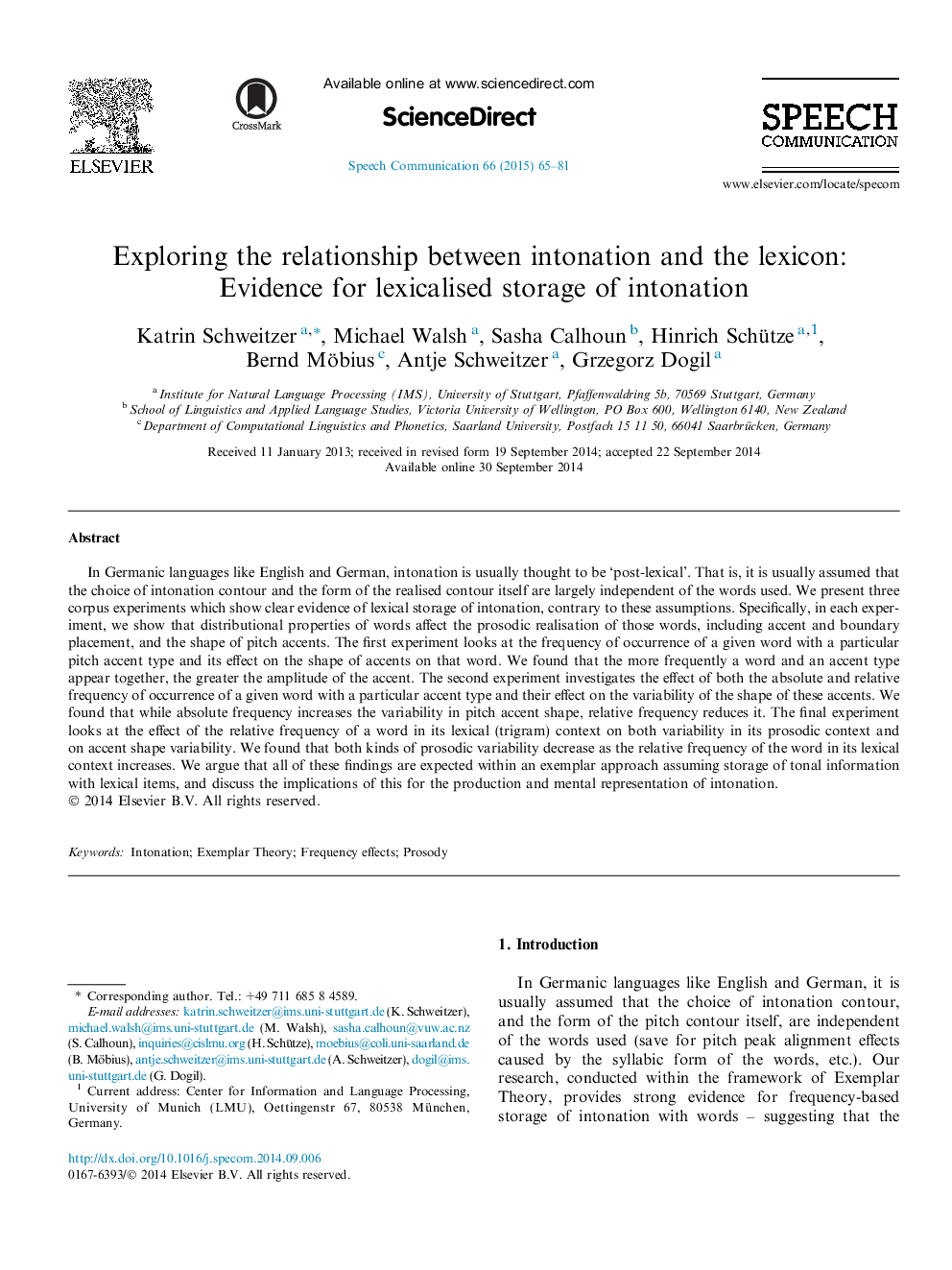| Article ID | Journal | Published Year | Pages | File Type |
|---|---|---|---|---|
| 6961181 | Speech Communication | 2015 | 17 Pages |
Abstract
In Germanic languages like English and German, intonation is usually thought to be 'post-lexical'. That is, it is usually assumed that the choice of intonation contour and the form of the realised contour itself are largely independent of the words used. We present three corpus experiments which show clear evidence of lexical storage of intonation, contrary to these assumptions. Specifically, in each experiment, we show that distributional properties of words affect the prosodic realisation of those words, including accent and boundary placement, and the shape of pitch accents. The first experiment looks at the frequency of occurrence of a given word with a particular pitch accent type and its effect on the shape of accents on that word. We found that the more frequently a word and an accent type appear together, the greater the amplitude of the accent. The second experiment investigates the effect of both the absolute and relative frequency of occurrence of a given word with a particular accent type and their effect on the variability of the shape of these accents. We found that while absolute frequency increases the variability in pitch accent shape, relative frequency reduces it. The final experiment looks at the effect of the relative frequency of a word in its lexical (trigram) context on both variability in its prosodic context and on accent shape variability. We found that both kinds of prosodic variability decrease as the relative frequency of the word in its lexical context increases. We argue that all of these findings are expected within an exemplar approach assuming storage of tonal information with lexical items, and discuss the implications of this for the production and mental representation of intonation.
Keywords
Related Topics
Physical Sciences and Engineering
Computer Science
Signal Processing
Authors
Katrin Schweitzer, Michael Walsh, Sasha Calhoun, Hinrich Schütze, Bernd Möbius, Antje Schweitzer, Grzegorz Dogil,
